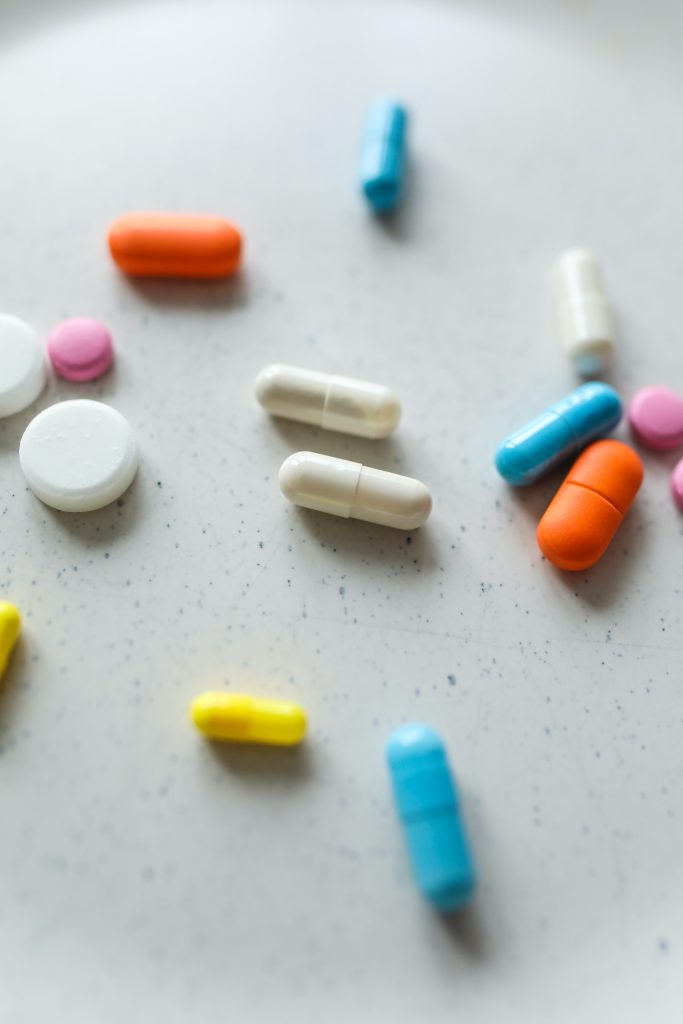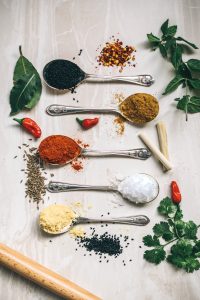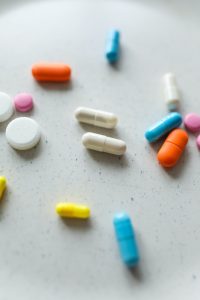
Introduction
Candida is a fungus, which is also commonly known as a yeast, and is a natural part of the microbiome. The problem with Candida is that under certain conditions it can become overgrown and can cause Candidiasis.
Several factors can cause Candida albicans to transition from a normal part of the digestive tract to an opportunistic infection, including:
- Antibiotic use
- Taking oral contraceptives
- Pregnancy
- Poorly fitting dentures
- Overuse of NSAIDs
- A diet high in refined sugars
- A weakened immune system
Candida Symptoms
The symptoms of Candida infections vary depending on the type of infection and the part of the body affected. The most common symptoms of Candida albicans infections include:
- Genital yeast infection in women (including vaginal discharge)
- Burning, itching, and redness in the genital area
- Thrush in the mouth
- Diarrhea
- Constipation
- Bloating
- Excessive Gas
- Sugar cravings
- Fatigue
- Joint and muscle pain
- Headaches
- Brain fog
- Skin and nail fungal infections
Candida albicans can become more virulent due to its ability to form biofilms. Biofilms are communities of microbial cells that are tightly packed and embedded in a web of substances that can grow on living surfaces such as the mucosal membranes of the intestinal and urinary tract. People who have been colonized with mold may also have a biofilm of both mold and Candida.
The Role of Herbal Antimicrobials
There are a number of herbal antimicrobials that are available to combat a yeast infection. Lets look at some of the strongest on the market.
- Garlic supplements containing high levels of allicin were found to be as effective in treating Candida infections as an antifungal medication
- Caprylic Acid – Studies have shown that caprylic acid can penetrate the cell membranes of Candida yeast, causing the cells to break down and leading to the death of the yeast. This makes caprylic acid a popular choice for those looking for a natural alternative to antifungal medications for the treatment of Candida overgrowth.
- Horopito (Pseudowintera colorata) is a plant species native to New Zealand with studies showing that horopito contains compounds with antifungal activity very effective against Candida
- Curcumin – Curcumin, derived from the popular south east Asian spice turmeric, and its derivatives have shown effectiveness in treating Candida infections and avoiding antifungal drug resistance. However the most effective form is the one where its not as bioavailable and has added black pepper so the activity stays in the gut.
- Proposlis – A resin collected by honey bees from tree buds was found to be just as effective as conventional antifungal drugs in treating stomatitis, which is commonly caused by Candida.”
- Undecylenic acid has gained recognition as a potent antifungal agent for combating persistent Candida infections, such as athletes’ foot and intestinal Candida overgrowth. Some studies indicate that it is approximately six times more effective than caprylic acid
- Oregano Oil – Studies show that the essential oil extracted from Origanum vulgare leaves a viable alternative to conventional drugs for treating candidiasis, as it has demonstrated significant antifungal activity against Candida species.
- Berberine – Berberine has shown to decrease biofilm formation which is an important part of getting rid of any Candida infection
Probiotics
Although probiotics aren’t the biggest killers, they can be helpful as a part of an overall strategy to beat a vaginal, oral and digestive Candida infection. A randomized clinical trial involving women who took fluconazole found that those who received probiotics for four weeks had a significantly lower amount of vaginal discharge compared to the group that received a placebo. Another specific strain of Saccharomyces boulardii is a probiotic strain has shown to inhibit C. albicans adhesion and reduces cytokine-mediated inflammatory host response. However, as the probiotics are short lived, it wont prevent further Candida infection.
The 3 Step Approach to Treating Candida
Eradicating Candida overgrowth isn’t just about controlling its growth through the anti-Candida diet, it also involves restoring the friendly bacteria that typically keep it in check to prevent reoccurrence.. By adopting the anti-Candida diet alongside a 4 step strategy can help repair your gut and prevent any future overgrowth
1 Starve the yeast – The first step is to deprive the Candida, which feeds on refined carbohydrates sugar, and yeast-containing foods. To do this effectively, you need to looking at removing most sources of gluten, sugar, refined and starchy carbohydrates, alcohol, dried fruit, fruit juices. Fruit in whole form is fine on the Candida diet but I normally air on the side of caution and have patients go on 3 weeks low sugar fruits such as berries.
2 Rebalance the Candida
After eliminating foods that feed Candida the next step is to target the Candida by taking supplements that break down the cell wall of yeast cells such as some of the herbs above or conventional products such as nystatin or fluconazole. Most people think they need to kill off all Candida in the gut. This is not true. We need Candida to absorb foods and so we need to have some Candida. Bringing it back into balance over a course of 2 to 4 months is a good time frame for this section although it can take up to a year depending on the severity
3) Repopulate the gut -The next step in the anti-Candida diet is to reestablish the eco system in the gut which is to reestablish good bacteria by taking a high-potency probiotic and prebiotic. The prebiotics are crucial as they are what feed the probiotics.
List of Prebiotic Foods
Vegetables | Chicory, Garlic, Leek, Onions, Spring Onion, Dandelion Greens, Burdock, Eggplant, Endive, Asparagus, Beetroot, Fennel, Green Peas, , Cabbage, JIcama, Konjac, Radicchio, Jerusalem Artichokes |
Legumes | Chickpeas, Lentils, Red Kidney Beans, Butter beans, black beans |
Fruit | Pomegranate, Peaches, Nectarines, Persimmons, Watermelon, Grapefruit, Pomegranate,) Apples, Bananas, Pomegranate, Peaches, Nectarines, |
Whole-Grains and Other Products | Barley, Rye, Whole Wheat (if tolerated), Oats, Wheat Bran |
What are the strongest Pharmaceutical Candida Killers
Below is a list of the strongest anti fungal medications
- Econazole
- Miconazole
- Canestan
- Terbinafine (Lamisil)
- Fluconazole (Diflucan)
- Ketoconazole (Daktarin)
- Nystatin
- Amphotericin
The two most frequently prescribed antifungal medications are Fluconazole (sold under the brand name Diflucan) and Nystatin. Fluconazole is considered to be the safer option as it is absorbed into the bloodstream and acts systemically, where as Nystatin only gets absorbed on the mucosal surfaces in comes into contact. Therefor for digestive tract issues, it needs to be taken on an empty stomach to be effective. Out of the two Nystatin is more effective in the mouth, pharynx and esophagus
Although antifungal medications are highly effective in treating candida infections and have relatively few serious side effects, the infections can return once the medication is discontinued. Studies have showed that when antifungals stop, the Candida infection returns within 6 months. Prolonged use of antifungal medications can also increase the risk of antibiotic and antifungal drug resistance, where the disease-causing organisms become immune to the drugs designed to kill them. A better approach to prevent recurrent candida infections may be to improve the overall balance of the ecology of the gut and bring in lifestyle changes that include reducing stress, a change to a more whole foods diet and using pro and prebiotics to change the microbiome
Safety Profile to herbal antimicrobials
The issue with pharmaceutical drugs is that they have more side effects than herbal and antimicrobials and this makes herbs and probiotics a safer option to most. Also, the fact that unless they are accompanied by the right diet and lifestyle changes then Candida will most likely return. The chances are if you are given a pharmaceutical drug to treat Candida will mean its being given by a GP and therein lies a problem as they wont understand how to change the gut eco-system as it has to be done in a specific way over a certain timeframe which is best down under a functional medicine practitioner.
The other issues is that the pharmaceutical drugs have one mechanism of action which means Candida can become resistant to the drug, where as with herbal antimicrobials, probiotics and biofilm busters, they have numerous modes of action and its far less likely that Candida can become resistant to them.
The Candida Diet
The Candida diet is a very important part of the approach to rebalance Candida.
It is important to note that there is limited scientific evidence to support the claims made about the Candida diet, however, in practice this is a very important of the strategy. The diet involves avoid and heavilty reducing
- Sugary foods and drinks, including cakes, sweets, soda, and fruit juice
- Refined carbohydrates, such as white bread, pasta, and pastries
- Alcohol, especially beer and wine
- Fermented foods, such as vinegar, soy sauce, and pickles
- High-starch vegetables, such as potatoes and corn
- Dairy products, including cheese and milk
- Peanuts and peanut butter
Foods that are typically recommended on the Candida diet include:
- Non-starchy vegetables, such as leafy greens, broccoli, and cauliflower
- Proteins, such as chicken, beef, lamb, fish, eggs, and tofu from organic sources.
- Healthy fats, such as olive oil, coconut oil, and avocado
- Probiotic foods, such as yogurt and kefir
- Nuts and seeds
- Herbs and spices, such as garlic, ginger, and turmeric which are all anti fungal.
Fruits on the Candida Diet.
Fruits are worth a special mention as they are very much maligned on the diet with many commentators mentioning their sweetness. However, it’s a very special sugar that gets absorbed high up the digestive tract so it doesn’t get fermented by Candida. However, I tend to air on the side of caution and recommend low sugar fruits for the first few weeks and then all types of fruits are recommended as it’s the very mineral, antioxidants that the body needs to overcome an infection.
How we can help?
Functional medicine takes a comprehensive approach to healthcare by examining not just the symptoms, but also the overall health and medical history of the patient to uncover potential underlying causes and especially with a condition such as Candida. The focus is on creating a personalized recovery plan tailored to the unique needs of each individual, rather than merely prescribing medication to address symptoms. Book an appointment today with one of our expert clinicians to discuss how we can help treat this condition.
References
https://www.nhs.uk/conditions/antifungal-medicines/
https://pubmed.ncbi.nlm.nih.gov/31615039/
https://pubmed.ncbi.nlm.nih.gov/33482069/
https://pubmed.ncbi.nlm.nih.gov/28514949/
https://pubmed.ncbi.nlm.nih.gov/20629753/
https://www.health.com/condition/yeast-infection/does-sugar-cause-yeast-infections
https://www.health.com/condition/yeast-infection/does-sugar-cause-yeast-infections
https://pubmed.ncbi.nlm.nih.gov/30725843/
https://pubmed.ncbi.nlm.nih.gov/23703468/
https://pubmed.ncbi.nlm.nih.gov/27793494/
https://pubmed.ncbi.nlm.nih.gov/16397851/
https://pubmed.ncbi.nlm.nih.gov/27793494/








